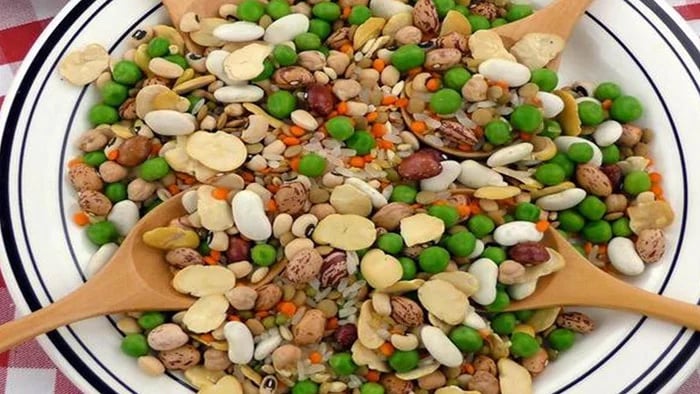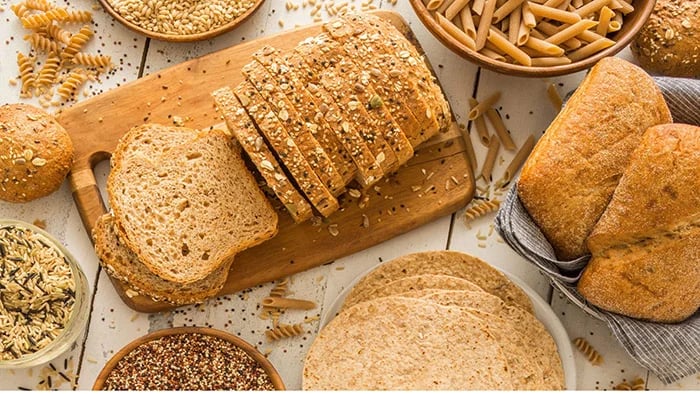Magnesium is an essential mineral for growing children as it is involved in more than 300 different chemical reactions in the human body. It plays multiple important roles in the human body, from promoting metabolism, improving energy, enhancing bone health to increasing muscle function and relaxation, ensuring heart health, preventing tooth problems, and boosting a stressed immune system.
Understanding Magnesium Deficiency In Kids
With so many amazing health benefits, meeting the daily required magnesium intake is essential. Infants aged 0 to 6 months need 30 mg/day, babies aged 7 to 12 months require 75 mg/day, toddlers aged 1 to 3 years need 80 mg/day, children aged 4 to 8 years require 130 mg/day, while kids aged 9 to 13 years need at least 240 mg per day.
Unlike vitamin D and vitamin B12, magnesium is relatively easy to source, as multiple foods are rich in important micronutrients. Here is a quick guide to foods to add to your kids’ diet that prevent magnesium deficiency in children.
Foods Rich in Magnesium for Your Kids
Fruits and Vegetables - Vegetables like spinach, Swiss chard, tamarind, potatoes with their skins, okra, and broccoli are rich sources of magnesium. Among fruits, bananas, apples, avocados, and blackberries are rich sources of magnesium. While a half cup of cooked spinach provides 75 mg of magnesium, a medium banana provides 32 gm, and a cup of blackberries provides 29 mg of magnesium. Incorporate these fruits and veggies into your kids’ diet and watch them work wonders for your kid.

Nuts and seeds - Pumpkin seeds are a superfood for magnesium, providing 592 mg per 100 gm of dried pumpkin seeds. Among others, an ounce of almond provides 80 mg of magnesium, while cashews, peanuts, chia seeds, and the rest follow in close pursuit. Incorporate nuts and seeds in your kids’ diet by making granola at home and pairing it with some yogurt or making tasty trail mixes at home to boost your kids’ magnesium levels on the go.
Legumes - Among legumes, soybeans, black beans, kidney beans, lentils, and edamame are wonderful sources of magnesium, offering between 50 to 70 mg of magnesium per serving. Kids who are fussy with soybeans and edamame can go for soya chunks as they are a tastier alternative that goes well in pulaos, snacks, and curries. As for young fans of Mexican cuisine, feed them homemade burrito bowls full of black beans and kidney beans, or add fancy names to ordinary Indian dals and rajma curries by internationally plating them, like lentil soup or kidney beans and pilaf (a fancy name for pulao).

Fatty fish - Some fatty fish, like salmon, mackerel, and halibut pack a lot of magnesium in them. In fact, a 100-gm serving of cooked salmon packs 30 mg of magnesium. And when paired with broccoli, and some lentils, a wholesome meal rich in magnesium and multiple other micronutrients nourishes your child and improves their health.
Whole grains - Bread and fortified breakfast cereals like quinoa, oats, and brown rice are great sources of magnesium. As only 2 slices of whole wheat bread offer 46 mg of magnesium, while ½ cup of cooked brown rice provides 42 mg of magnesium, whole grains are a great way of incorporating carbs, energy, and magnesium into your kids’ diet. Make them quinoa bowls or whole grain bowls filled with vegetables, proteins, and legumes, and watch your children gobble them down. You can also take the dessert path and make some overnight oats or ragi pancakes. Sometimes, even low-fat, homemade bread pudding wins the deal.

Tips on incorporating magnesium-rich foods into your kids’ diet
- Try to pair something your children like, either food item, flavor, or texture, with foods rich in magnesium, in case your kids are fussy eaters. This will make them at least want to give it a try.
- Since good food sources of magnesium are abundant, make it a priority to hit the daily target for your children, but do not go over the limit, as that can lead to depression, lethargy, difficulty breathing, irregular heartbeats, and urine retention. Magnesium in optimal amounts is incredible at improving child health, growth, and disease protection.
- Involve your kids in the process. Try to involve them in preparing the food while whipping up a grain bowl for lunch. While talking, also discuss the health benefits of the dish casually before letting them taste it and decide which team they wish to be on, team deficiency or team health.
- Since kids do not learn from adults but copy them, it is wise to incorporate magnesium into your own diet as well. Make magnesium-rich foods a family affair, especially since all the sources are also rich in multiple other vitamins, minerals, macronutrients, and fiber.
- Remember, since kids love yummy fast foods but hate being singled out for any special ‘healthy food’, it is ideal to stop associating fast food with rewards and healthy fruits, vegetables, and fish with punishment from a tender age to promote the consumption of magnesium-rich food in your household.
Kaushiki Gangully is a content writing specialist with a passion for children's nutrition, education, and well-being. With more than five years of writing experience and a science-based background, she provides nuanced insights to help families raise happy, healthy kids. Kaushiki believes in making learning and healthy eating fun, empowering parents with practical, easy advice.
The views expressed are that of the expert alone.
The information provided in this content is for informational purposes only and should not be considered a substitute for professional medical advice, diagnosis, or treatment. Always seek the advice of your physician or another qualified healthcare provider before making any significant changes to your diet, exercise, or medication routines.
















